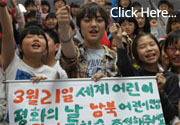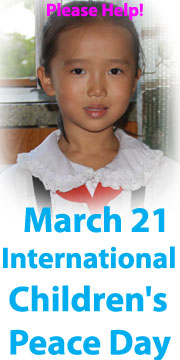|

Tourism in Indonesia
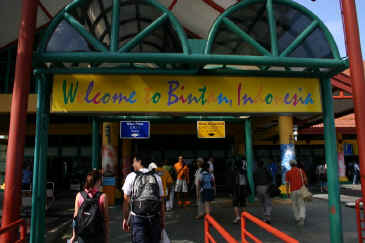
Tourism in Indonesia is being
developed through two main programs, covering tourism and tourism products.
There are five supporting programs, namely' control of environmental
pollution, education, training and tourism guidance; tourism research and
development; tourism infrastructure development; and the supervision and
development of arts and culture.
The target for tourism set in
Repelita VI is 6.5 million foreign tourists with US$9 billion in foreign
exchange. Meanwhile 84.2 million domestic tourists are expected to spend nine
(9) trillion rupiahs. Through various activities, tourism is expected to
generate 900.000 new job opportunities.
We know from looking at
other towns and countries that tourism is key to
creating booming economies. If you stay for example in
hotels in Brighton
in the UK or in a seaside resort in France, then you
will notice that tourism is huge in these areas. If
Indonesia understands how to appeal to the tourist then
new jobs will be generated for those who live here.
Back to Top
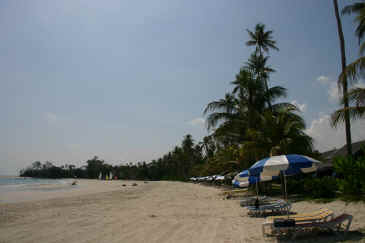
DOMESTIC TOURISM PROMOTION
Tourist objects and tourist
attractions are being introduced to the Indonesian people to promote domestic
tourism. Group tourist awareness (Pokdarwis) has been established as moving
spirit for tourist development such as the improvement of tourist attractions
to socialize the Seven Charms Program (Sapta Pesona) consisting of safety,
cleanliness, orderliness, comfort, beauty, hospitality, and enchanting
memories. Until 1997/98, there were 921 Pokdarwis throughout Indonesia, or an
increase of 71.5% since 1993/94. To encourage domestic tourism, in 1997/98 the
Government started to develop tours for senior citizens.
The Tourist Awareness Campaign
every year adopted different themes in accordance with the national
development rhythm and dynamics. In 1997, the theme was The Year of
Cooperatives and Telecommunication and in 1998 the theme was: The Year of Art
and Culture.
Several national tourist events
have been held throughout Indonesia. In 1997/98 the events included Toba Lake
Festival in North Sumatra; The Indonesian Archipelago Palace Festival in West
Java; Borobudur Festival in Central Java; Bromo Festival in East Java; The
Balibo Art Festival in East Timor; The Bidar Kapuas Festival in West
Kalimantan; Sea Park Festival in Maluku; and the Lembah Baliem Arts and
Culture Festival in Irian Jaya.
Despite the current economic
crisis which has hit Indonesia since July 1997, the number of domestic
tourists increased steadily. In fiscal year 1997/98 the number of domestic
tourists was 120 million persons who spent 14 trillion rupiahs.
Back to Top
OVERSEAS TOURIST PROMOTION
Tourist promotion campaigns
have been staged through Indonesia's Seven Tourism Promotion Centers (P3I)
abroad, namely in Frankfurt, Los Angeles, Tokyo, Singapore, Sydney, London and
Taipei. Since 1989 the Indonesia Tourism Promotion Agency (BPPI) developed new
markets and improved promotion programs.
BPPI promotion efforts both at
home and abroad was financed by 20% of the development tax revenue in ten
tourist destinations, namely: North Sumatra, the Jakarta, West Java, Central
Java, the Yogyakarta, East Java, Bali, North Sulawesi, and South Sulawesi.
However, due the protracted monetary crisis which hit Indonesia the fund
collected from the ten tourist destinations was only sufficient for BPPI
operational cost until August 1997. To overcome this problem various
marketing’s efforts had been conducted in Singapore, Australia, Japan,
Taiwan, Germany, America, England, the Netherlands, Austria, and Switzerland.
In fiscal year 1997/98, an
integrated promotion program was designed to increase the efficiency and
effectiveness, of marketing by reexamining the role and responsibility of
agencies involved in overseas tourism marketing while utilizing all related
components including Indonesian delegations abroad as well as students and the
foreign media.
Several important tourism
events abroad in which Indonesia participated among others were: International
Travel Expo, June 1997 in Hong Kong; Holiday and Travel Show, June 1997 in
Sydney; World Travel Market, November 1997 in London; Diving Equipment
Marketing Association (DEMA), January 1998 in Orlando, Florida; and
Internationale Tourismus Borse, March 1998 in Berlin.
In fiscal year 1997/98,
international tourist activities held in Indonesia, were: Krakatau Festival in
Lampung; the Culture Enchantment and Folk Performances Festival in Jakarta;
Maleman Sriwedari and Obral Gedhe Solo in Central Java; and International Wind
Surfing Competition in West Nusa Tenggara, Bali and South East Sulawesi.
Back to Top
Until fiscal year 1997/98
various conventions on tourism had been held: 845 MICE (Meetings, Incentives,
Congress and Exhibitions) events with 140,762 participants. There were 26
companies operating in the convention services business, including the Jakarta
Convention Center, Jakarta International Trade Center and Bali International
Convention Center.
To promote convention tourism,
in 1997/98 Indonesia participated in various events such as convention and
exhibition (CONVEX) in London, European Incentive Business and Travel Meeting
(EIBTM) in Geneva, and Incentive Travel and Meeting Executive Shows (ITME) in
Chicago. In addition, some international conferences had also been held in
Indonesia such as the International Conference on Culture Tourism (Batik
Conference) in Yogyakarta; The Asia Art Fair and Jewels, in Jakarta; and
Parmata Gem Related Tourism Conference and Exhibition, in Banjarmasin.
During three years of Repelita
VI the country's foreign exchange earnings from the tourism sector contributed
significantly to balance the budget deficit in goods and services.
However, due to the current
monetary crisis, natural disasters and security disturbances in many regions,
the total number of foreign tourists in fiscal year 1997/98 decreased by 6.7%
compared to 4,771,244 visitors in the previous year. The decline occurred
since July 1997. Between April to July 1997, the number of foreign tourists
visiting Indonesia still showed an increase by 3.9% or 1.75 million visitors
with US$2,289.4 million in foreign exchange compared to that in the same
period of the previous year with 1.69 million visitors and US$2,210.9 million
in foreign exchange.
From August 1997 to March 1998,
the number of foreign tourists visiting Indonesia declined to 3 millions from
3.4 million visitors at the same period in 1996/97, showing a 11.9% decrease.
The country's foreign exchange earnings also decreased from US$4,447.9 million
to US$3,924.6 million at the same period in 1997/98. On the whole, the
country's foreign exchange earnings in fiscal year 1997/98 was US$6,241.7
million or a 2.6% decrease compared to that in the previous year.
Back to Top
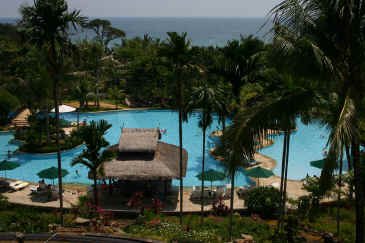
DEVELOPMENT OF TOURISM
PRODUCTS
In fiscal year 1997/98, the
Main National Tourism Development Plan (RIPP) was completed, as was the main
Regional Main Tourism Development Plan for the provinces of Jambi, South
Sumatra, South Sulawesi, Palembang, in South Sumatra; Kaliurang, Merapi and
Merbabu in Central Java; Pasir Putih in East Java; Bukari in South East
Sulawesi; the western part of West Java; Ratu boko in Sleman and Solo
Kasunanan Palace in Central Java.
In facing the globalization era
and to improve the regional and sub-regional economic endurance, a closer
cooperation program in the tourism sector has also been implemented with
several ASEAN countries, such as the Indonesia, Malaysia, Singapore - Growth
triangle (IMS-GI), Indonesia, Malaysia, Thailand, Growth-triangle (IMT-GT) and
Brunei, Indonesia, Malaysia, the Philippines East ASEAN Growth Area (BIMP-EAGA)
on marketing and promotion of tourist package programs, promoting tourist
marketing between the member countries, accommodating and mobilizing private
investment in the field of tourism.
In fiscal year 1997/98, the new
accommodation capacity was 31,953 rooms. The number of rooms available until
1997/98 was 185,136 rooms consisting of 81,997 rooms in star-rated hotels and
103,136 rooms in non-star hotels. At the same time, the application of
information technology in the field of tourism has also been continued in 47
international hotel chain networks and 16 national hotels chain networks.
The number of travel bureaus in
fiscal year 1997/98 also increased to 2,631 with 721 tour leaders reached 721
and 9,365 tour guides.
Back to Top
|






